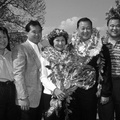
After our mother passed in 2013, my siblings and I were faced with the daunting task of cleaning out her house. That included her garage and a storage unit she had rented for decades filled with who knows what. While there were lots of personal family items that my brothers, sister, and I were able to divide up, there was also a lot of junk (there, I said it). We eventually engaged an estate sales person, who told us not to dispose of anything so she could carefully scrutinize everything. She then had us rent a large trash bin so she could dispose of everything not saleable. I remember getting a call from her on my cell phone where she requested another bin, since she had filled the original. “Your mother didn’t throw anything away,” she observed.
My mother lived through the Great Depression and World War II, so it is not surprising she tended to hoard. Among the things she stockpiled were paper towels, toilet paper, and boxes of tissue, which at least were still usable after she passed (my wife and I just used the last of my mother’s tissue last month). But Mom also had dozens of bags filled entirely with more plastic bags and apparently every hanger she ever got from the dry cleaner. The garage and the rented storage space contained old furniture, which had sentimental value, but was otherwise unwanted by anyone else, even for free.
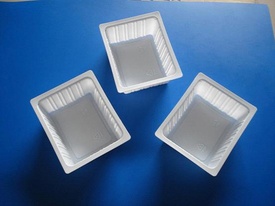
I have heard the same story from other Japanese Americans about their parents not being able to throw away old tofu containers or the wooden boards that come with kamaboko. My mother and others like her, who lived through tough times, also had trouble disposing of specific items, especially ones that were expensive to buy. I remember seeing old broken console televisions in JA households with a newer television on top of it. For some, it was their massive stereo/record player that was like furniture and sat in many living rooms after it ceased to produce music. I remember helping to clean out my wife’s uncle’s house and finding four or five old vacuum cleaners, only one of which worked, along with the stereo cabinet with its electronic guts hanging out as if the patient had died in the midst of the operation.
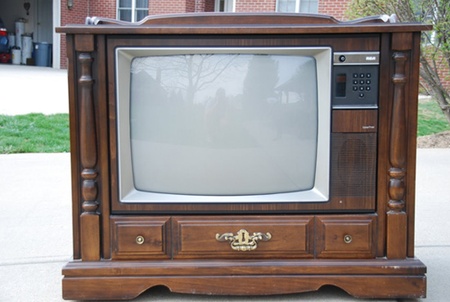
But was all this just the result of a generation of people living through traumatic times who could not adjust to delayed prosperity? And did Japanese Americans have extra difficulty in letting go of things because it was mottainai? Was our mother and the Nisei generation in general victimized by too much mottainai? Is that even possible?
Most Japanese Americans, whose Issei ancestors arrived in the United States just before or after the turn of the 20th century, know the term mottainai as an admonishment to not be wasteful. To me, it especially relates to food and being told to completely finish a meal or to take the leftovers home. But it also brings to mind any item or object that is still usable and should not be thrown away. Certainly, the concept of making the most of what you have is not just a Japanese cultural value. Western aphorisms include “Waste not, want not” and Ben Franklin promoted thriftiness with sayings like “A penny saved is a penny earned.” But as in all things, can we take mottainai too far?
There is something about the Japanese concept of mottainai that suggests more than just recycling plastic water bottles. As a Sansei who understands so little Japanese that some people think I must be adopted after being raised by wolves (and not Japanese wolves, since they are basically extinct), I find understanding Japan’s traditional cultural vocabulary intriguing, but elusive. As Japanese Americans, we tend to have a rudimentary grasp of certain terms like shikata ga nai, gaman, enryo, giri, and mottainai. Many of us heard these words used by our grandparents and parents and probably figured out a working definition through their contextual usage. But it is doubtful, unless someone in your family is a Buddhist minister or a scholar, that any of them were ever fully explained.
Because of this, I suspect that I often may be applying a Japanese word or concept incorrectly or inappropriately. When I am with other Japanese Americans, it is not a problem, since we have informally agreed upon the meaning of such terms like shikata ga nai (circumstances that are out of one’s control) and gaman (quietly enduring hardships). Recently, someone informed me that those two terms have negative connotations in Japan, perhaps implying giving up and/or repeatedly making mistakes, like someone who is always apologizing for same error.
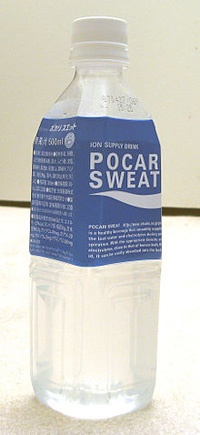
So when I am speaking with Japanese nationals (in English, of course), I fear that my attempts to include a few Japanese words or terms bring about discreet snickers. It reminds me of my first trip to Japan in the 1980s, where I noticed that the English on certain products was similarly applied in well meaning but unintentionally hilarious ways. The most memorable example was a sports drink with the unfortunate name, Pocari Sweat. Oh boy, sounds refreshing!
Anyway, I can imagine how many Pocari Sweat-like references I have made in my lifetime talking to people from Japan. Because of that, I have made more of an effort of late to better understand certain words or terms. More importantly, I am trying to learn more about Japanese traditional culture, since that is the context from which these expressions originated. I find it all fascinating.
Initially, I was looking for the counterbalancing value to mottainai. Asian culture, especially in Japan, China, and Korea, fundamentally believes in yin and yang, two opposing halves that make up a whole. This duality is usually illustrated with examples like night and day and male and female. So what is the other side of the mottainai coin?
I recently contacted a friend of mine, Professor Arthur Sakamoto who teaches at Texas A&M University. I asked him about traditional Japanese cultural values. Arthur is a sociologist, who gave a couple of presentations at the Japanese American National Museum when I was still there. Arthur shared some of his work with me, including an article he had co-authored with Hyeyoung Woo, Isao Takei, and Yoichi Murase entitled “Cultural constraints on rising income equality: A U.S.-Japan comparison” (Journal of Income Inequality, December 2012).
What interested me was their observation that Japan seemed to have less income inequality than in the U.S. Since the common view is that Japanese see themselves as part of a group and Americans as individuals, one would think the Japanese worker would be subject to the whims of management. Sakamoto and his co-authors explained that “a Japanese is more likely than an American to concede some self-interest and individual preferences to the activities, concerns, ostensible needs, and dictates of the group.” The article goes on to state that the Japanese tend to view “productivity as being primarily a group phenomenon that cannot be readily ascribed to individuals.” This is in direct contrast to America, the article acknowledged, in which the “stars” get promoted and make the most money.
If Japanese cultural values like wa (imprecisely translated as social harmony) and enryo (repressing one’s own preferences if they are incompatible with the group) constrain the individual worker to even ask for a raise, how is it that income inequality is not running wild in Japan? According to Sakamoto and company, it’s because of a balancing Japanese cultural value called amae. The article revealed, “Amae refers to the benevolence that a person in the superior or stronger position in a social relationship is expected to show towards the person in the inferior or weaker position in the relationship. To the extent that employers do have amae, they will be reluctant to take advantage or obviously exploit their workers.”
Ah, ha! A perfect example of how such things remain in balance in Japan. There must be something like amae to balance out mottainai, I thought.
Initially, it occurred to me that while my Nisei mother had difficulty disposing of unused items, my Kibei mother-in-law maintained a much more organized and less cluttered house. It dawned on me that the difference was my mother-in-law spent her formative years in Japan, a densely populated country of well over 100 million with a landmass smaller than the state of California. Personal space is limited and highly valued in Japan, especially in the large cities. This could be the counterpoint to what I would call mottainai hoarding. (Quick side note: I saw a documentary on NHK World which showed individual Japanese using rented storage units to hang on to things that would not fit in their homes. So they hoard as well.)
But this didn’t really provide the counterbalancing value I was seeking. I did some reading and discovered that mottainai is actually a Buddhist word. According to the Rev. Chijun Yakumo in his publication, Thank You, Namu Amida Butsu, “This term is written with the characters for ‘thing’ and ‘essence’ and a negating suffix. It is often translated as ‘irreverent’ or ‘sacrilegious’ when used by itself. When used as in, ‘How mottainai!’ it is usually translated as ‘How wasteful!’ But mottai-nai implies that if you consider something only from the point of view of how you can use it, you disregard the essence or life of that thing. When, however, we consider everything as ‘belonging to the Buddha,’ we accept water as water, a scrap of paper as a scrap of paper, and acknowledge its value for itself.”
Interestingly, Kenyan Professor Wangari Maathai, a Nobel laureate, started an organized international campaign after she visited Japan in 2005 based on this concept of mottainai. After learning about the term, Prof. Maathai introduced mottainai to worldwide audiences in Africa, Asia, Europe, and the United States. She summarized the campaign with the three “R’s”: to Reduce waste, Reuse finite resources, and Recycle. Some add a fourth “R” for Respect, which fits the Buddhist meaning. (To learn about this campaign, go to http://mottainai.info/english/)
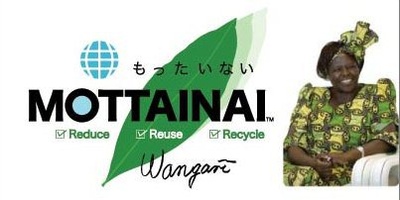
In Southern California, the Sustainable Little Tokyo (SLT) project has adopted mottainai as practically its rallying cry. Two sets of SLT canvas bags have been printed and sold with the word emblazoned on the side. One of the members of the SLT project had visited Japan last year and discovered that a Japanese newspaper chain and a corporation supported Prof. Maathai’s campaign. The SLT project, which is also focused on economic development and arts and culture as a way to preserve the historic nature of Little Tokyo, adopted the four R’s as way to promote its ecological goals.

I finally arrived at a better understanding of mottainai after talking to a friend of mine, who is from Japan and is planning one day to retire there. She told me that she recently began giving away certain items that she herself was not using. She had sets of dishes and glasses that she never brought out of the cupboard. By giving them to someone who would actually use them, the tableware would be able to fulfill its original purpose. Letting them just sit unused was, in fact, mottainai. Allowing one’s home to fill with clutter would be the height of mottainai.
Years ago, I had made the same argument to my mother. She had unopened boxes of gifts she had never given, clothes she had never worn, and kitchen appliances she had never used. Since she was not using them, it would make sense for her to donate some of these items to someone who needed them. Unfortunately, my mother could not part with her possessions, but I now realize that mottainai had its own balance within the greater Japanese culture. In contrast, American culture seems to allow for excess. The notion that “you can’t be too rich or too thin” exemplifies this philosophy that there is never too much of a good thing.
We as Japanese Americans can benefit from learning and understanding the traditional Japanese cultural values that our ancestors brought with them from Japan. It gives us the opportunity to make better choices on how to live our lives more productively in order to leave the world a better place for future generations. If we don’t, that would be mottainai.
© 2015 Chris Komai




